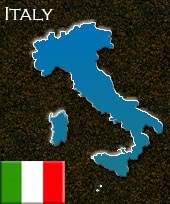New archaeological find explores life in ancient Roman town buried by volcano in 79 AD
 Rome, March 23 : Archaeologists have uncovered a marble sculpture dating back to the 1st century AD in the ancient roman town of Herculaneum, which has been sent to Naples, where it will join a major exhibition exploring life in the city buried by Mt. Vesuvius in 79 AD.
Rome, March 23 : Archaeologists have uncovered a marble sculpture dating back to the 1st century AD in the ancient roman town of Herculaneum, which has been sent to Naples, where it will join a major exhibition exploring life in the city buried by Mt. Vesuvius in 79 AD.
According to Roman news agency ANSA, the show, running until April 13, already features over 150 artefacts and human remains uncovered over the last three centuries, but the new relief, uncovered by accident last month, is stirring fresh interest.
The marble sculpture, dating back to the 1st century AD, apparently depicts two separate scenes centred on Dionysius, the Greek counterpart of Ancient Rome''s god of wine and merrymaking, Bacchus.
"The relief is particularly fascinating for scholars as we are not yet certain exactly the tale that is being reproduced on the work," explained Herculaneum's excavation chief Maria Paola Guidobaldi.
"It almost certainly shows Dionysius and what appears to be one of his female followers, a Maenad, dancing. However, there are also two other figures, one with men's hair and the other wearing female clothes that aren't yet clear," she added.
"It was very probably some kind of offering, perhaps a thanksgiving, much as people make today to patron saints," she further added.
The Greek marble relief was uncovered by accident in Herculaneum on February 18, during regular maintenance work.
It was located in a luxurious residential building on the northwest block of the town, which has only been partly excavated so far.
The relief was fixed in the eastern wall of a large room, at about two metres above the ground.
It appears to have been designed as a partner for another relief, located at the same level on the southern wall of the room, which was removed in 1997.
"The find is particularly important owing to the interpretation of the scene it shows, which is still an open question," said Pompeii Superintendent Pietro Giovanni Guzzo.
"So far no one has been able to find a connection between the two separate scenes dividing the relief, the dancer and the homage to Dionysius," he added.
While Pompeii was covered by hot ash and lava, Herculaneum, its less famous neighbour disappeared under an avalanche of molten rock.
This mingled with mud and earth and solidified, allowing fragile organic matter like wood, fabrics, wax tablets and papyrus rolls to survive.
Archaeologists began digging at the site at the start of the 1700s and continue to make discoveries today. (ANI)